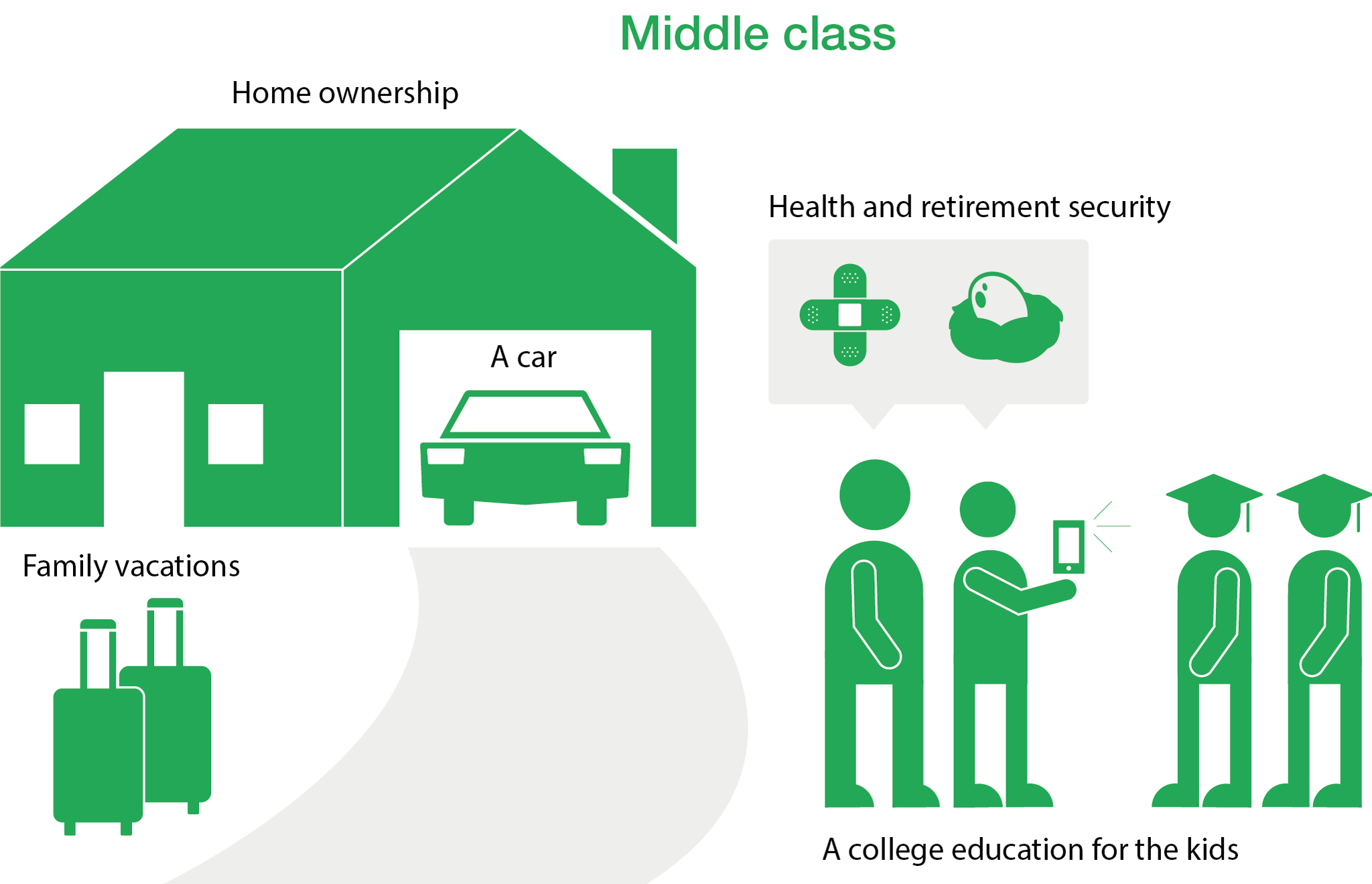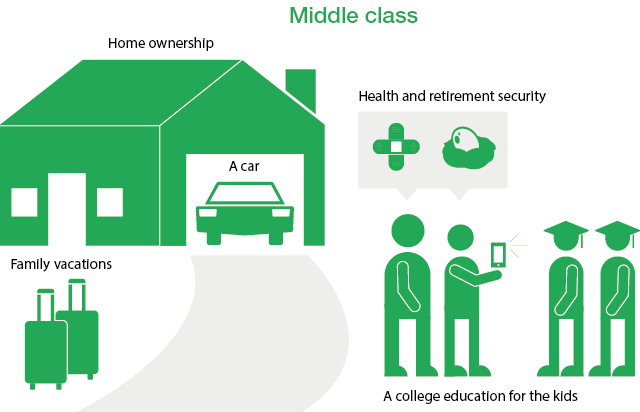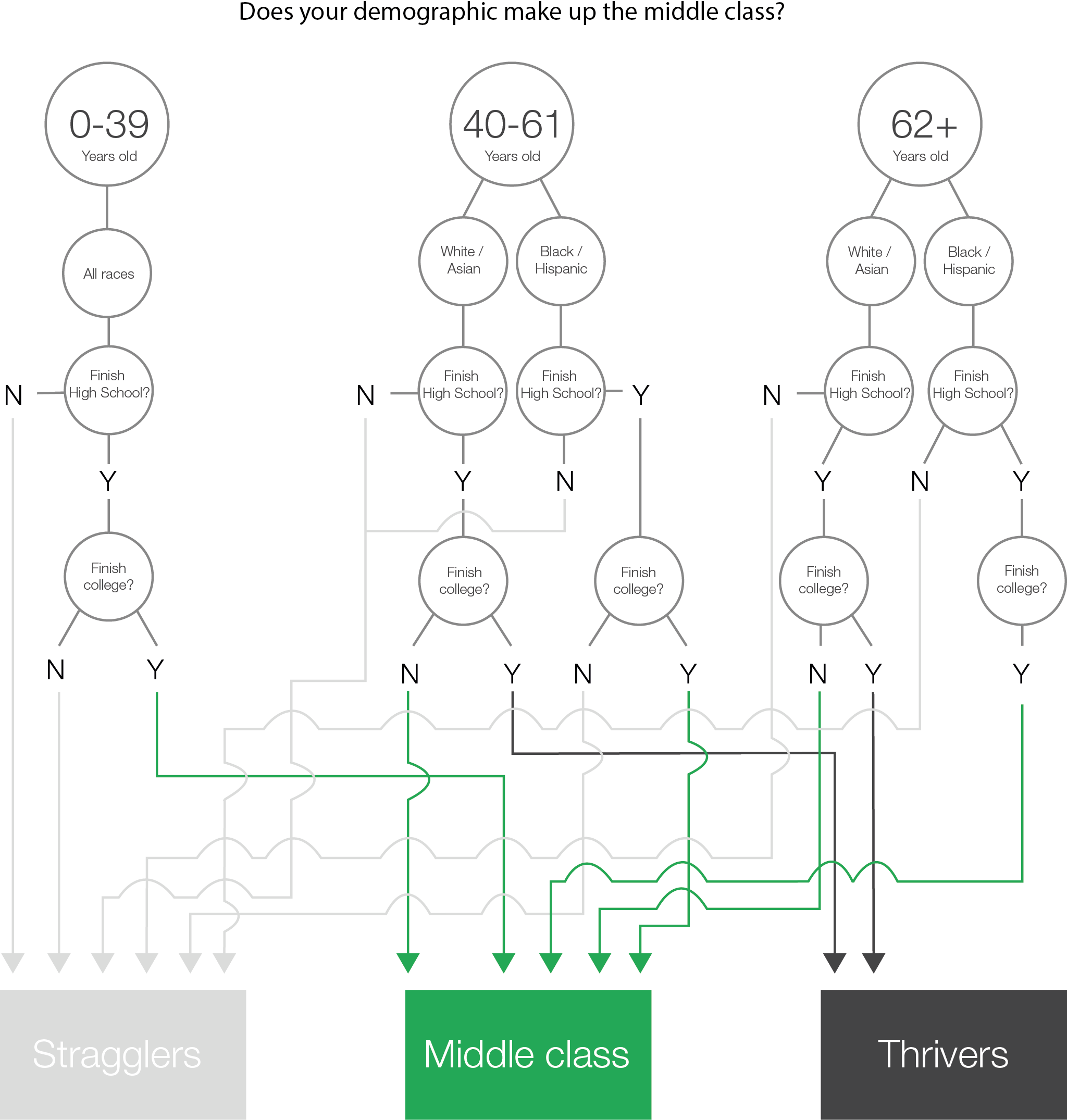

Everyone's talking about saving America's middle class. But just who exactly falls into this group?
That's actually a much more difficult question to answer than it seems. While some experts define the middle class by income, others define it by lifestyle. Still others say it's a state of mind.
Here are five different ways that economists, federal agencies and even the White House measure and characterize the middle class.
Whether you're considered middle class most commonly depends on your income. But experts differ on how much you have to earn to fall into this camp. One of the narrowest definitions limits it to those who are literally in the middle fifth of the nation's income ladder. A wider characterization includes everyone but the poorest 20% and the wealthiest 20%. Displayed below is the Pew Research Center's definition, which is two-thirds to two times the national median income for your household size.


*Annual income for a four-person household; Source: Pew Research Center
Some Americans may not be bringing in middle-class incomes, but they have a lot of savings or investments. This is particularly true of the elderly living off their nest eggs. So some experts prefer to use wealth as the determining factor. New York University Professor Edward Wolff, for instance, defines middle class as the middle three-fifths of the wealth spectrum. Those below that threshold are in debt and those above are wealthy.


*Net worth; Source: Edward Wolff, NYU
Another way to define middle class is by how much you spend. This more accurately reflects your well-being since income doesn't take into account non-cash government benefits, such as food stamps, or savings and can fluctuate greatly from year-to-year, say proponents of this measure.
The consumption measure used by Notre Dame Professor James X. Sullivan includes spending on food, transportation, entertainment, housing and other items. It excludes health care expenses and education, which Sullivan says might be considered investments. He defines the middle class as those in the middle fifth of spending.


*Annual spending for a four-person household; Source: James Sullivan, Notre Dame
Soon after President Obama took office in 2009, he created a task force aimed at raising the living standards of the middle class. But first the task force had to define middle class.
How did it choose to define this group? Through their aspirations ... you know, the house with the white picket fence, the occasional family vacation and a few other things.


Source: White House Task Force on the Middle Class
The St. Louis Federal Reserve Bank takes a more complicated approach. They combine sociology with economics to define the middle class. Economists there don't like using annual income because it can vary widely over time.
So it look at three demographic characteristics — age, education and race — that aren't as volatile and that they say better determine one's income and wealth accumulation. The middle class is generally made up of people who fit some combination of the three. (This is not to say, for instance, that every 45-year-old black college grad is middle class.)
The Fed describes those doing better than the middle class as thrivers and those doing worse as stragglers. Check out our flow chart below to see who meets this definition of middle class.


Source: St. Louis Federal Reserve Bank